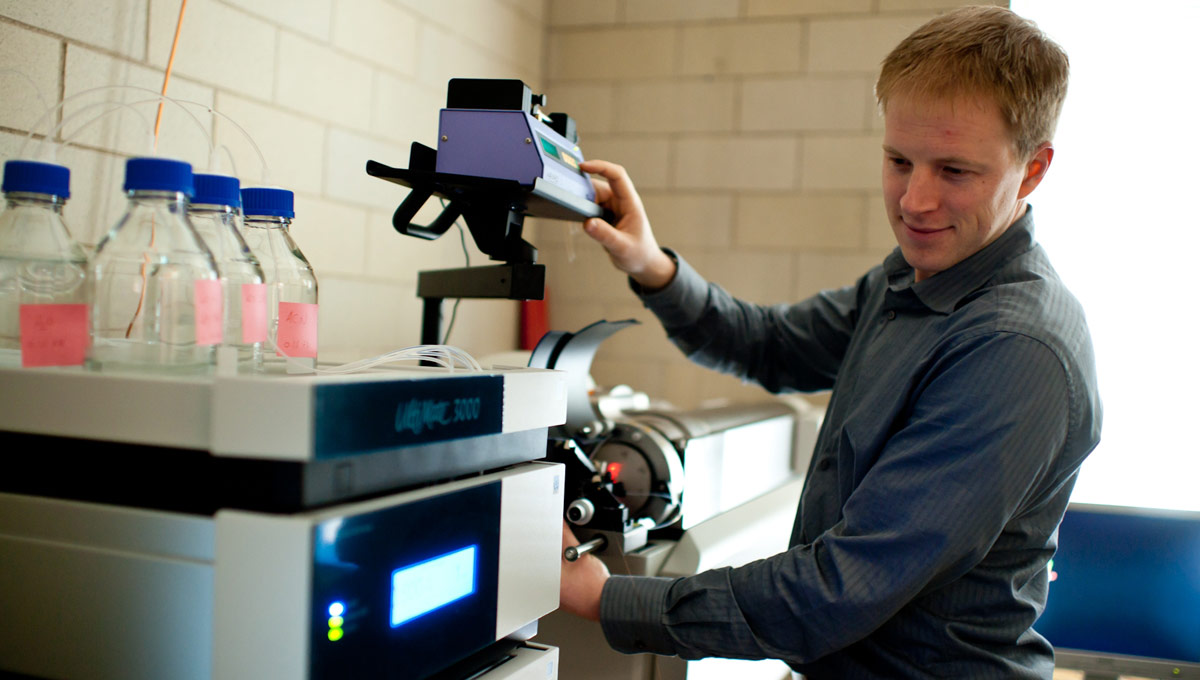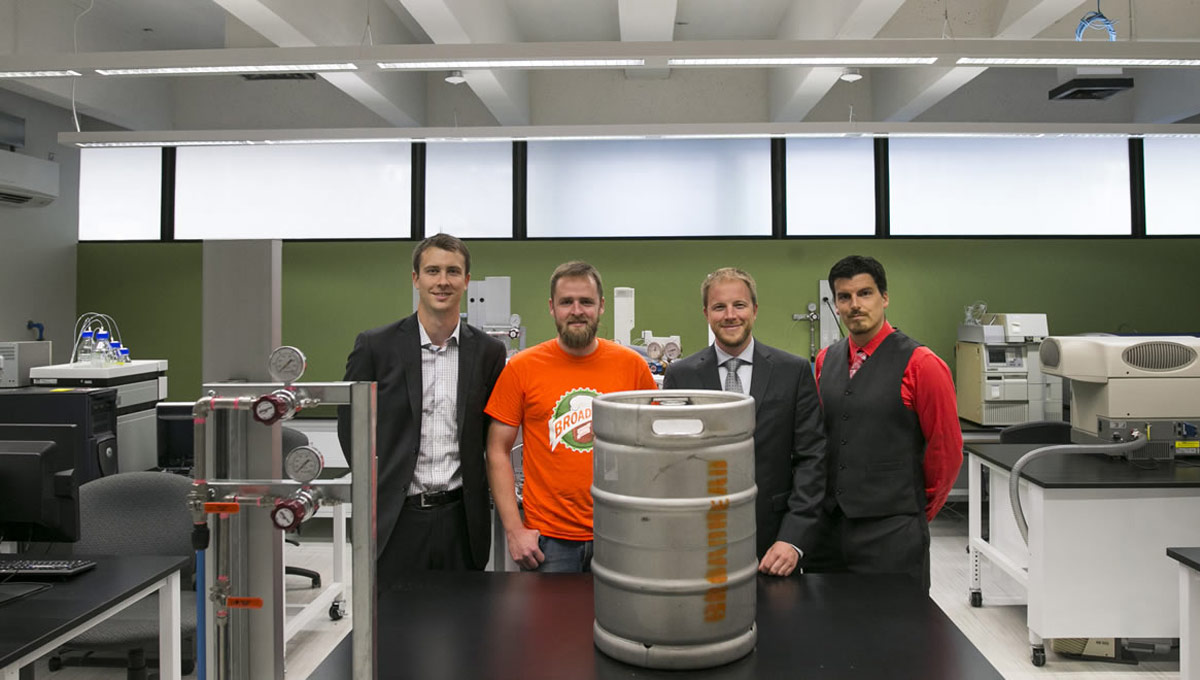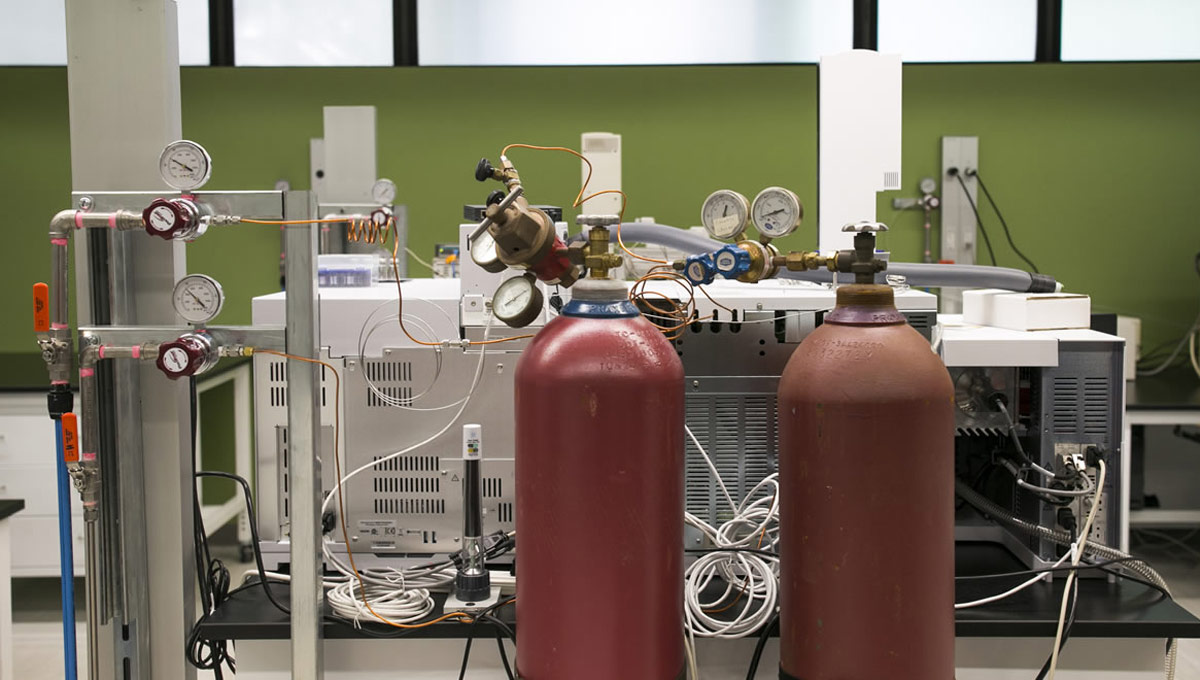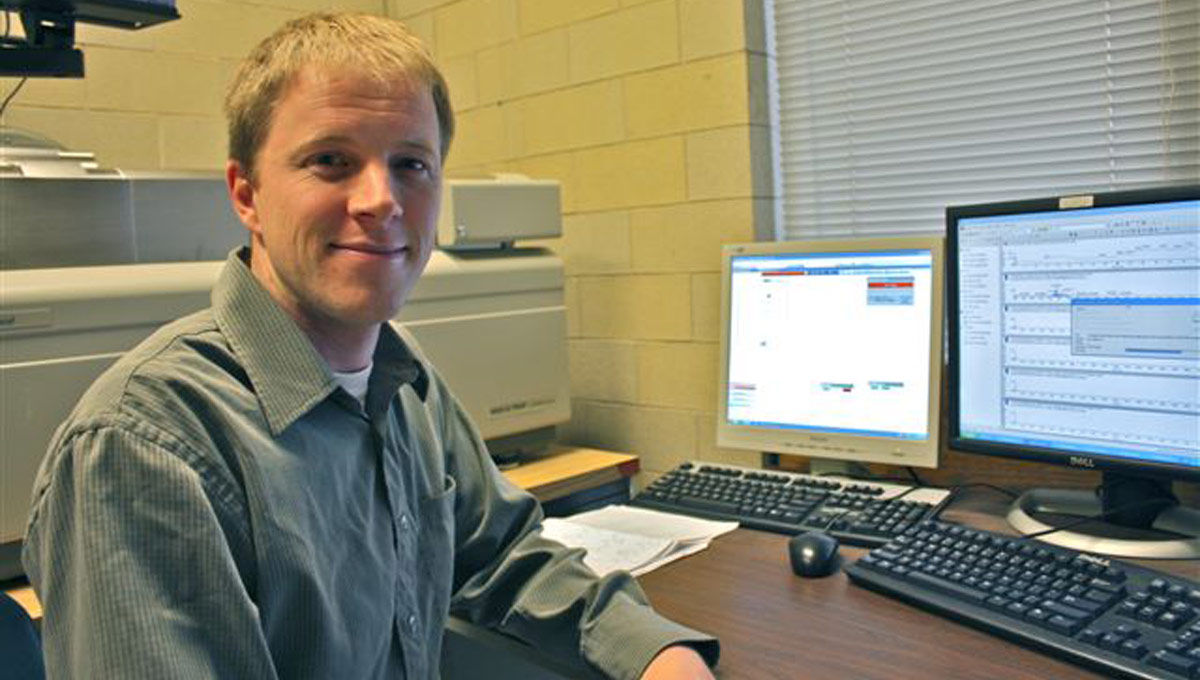By Dan Rubinstein
Cancer is an extremely complex disease, and researchers have to be both methodical and creative when working to develop new types of treatment.
One promising approach is to use engineered viruses to attack cancer cells. Some tumours, however, can fight off these viruses — a hurdle that prompted a trio of Ottawa-based scientists to collaborate on an innovative solution.

Carleton University chemistry professor Jeff Smith
Their team, led by Ottawa Hospital Research Institute (OHRI) cancer therapeutics researcher Jean-Simon Diallo, Carleton chemistry professor Jeff Smith and University of Ottawa biochemist Christopher Boddy, has created a new molecule that could help cancer-fighting viruses be more effective against a wider variety of tumours.
“The use of engineered viral strains such as … oncolytic viruses (OV) to selectively destroy cancer cells is poised to make a major impact in the clinic and revolutionize cancer therapy,” declares the abstract of the paper they published recently in the journal Scientific Reports.

“The heterogeneous nature of tumors is widely accepted to be a major obstacle for OV therapeutics…. Here, we describe the development of a new class of small molecules for selectively enhancing OV replication in cancer tissue.”
The work that led to this breakthrough began around seven years ago when Diallo was a postdoctoral fellow in the lab of John Bell, a renowned senior scientist at the OHRI.
Diallo was doing high-throughput experiments to assess how tens of thousands of small molecules impacted the cancer-fighting properties of oncolytic viruses. He identified 15 novel compounds (or “viral sensitizers”) that appeared to help OVs shrink tumours and increase longevity in mice.
After publishing these results in a 2010 paper, Diallo turned to Boddy and Smith to gain a deeper molecular understanding of the most active of these viral sensitizers, and try to improve their therapeutic relevance.
Viruses attack cancer cells
“Generally, in society, viruses are seen as a bad thing,” says Smith. “But in some cases, enhancing a viruses’ growth is a good thing, such as when it selectively attacks cancer cells but leaves healthy cells alone.”
One OV, known as T-VEC, or by the brand name Imlygic, was approved by the U.S. Food and Drug Administration last October for the treatment of melanoma in patients with inoperable tumours.

Jeff Smith (third from right) with colleagues and <a href="http://newsroom.carleton.ca/2015/09/23/carleton-opens-mass-spectrometry-centre" target="_blank" rel="noopener noreferrer">a local brewery client</a> in the <a href="https://carleton.ca/cmsc/" target="_blank" rel="noopener noreferrer">Carleton Mass Spectrometry Centre</a>.
Smith had first met Diallo when the Carleton chemist did a talk at the OHRI. Their personalities clicked, and a few months later he got the call that led to their triangular collaboration with Boddy: “We’ve come up to a roadblock,” Diallo said to Smith, “and we believe mass spectrometry could be a good tool to help us understand why we’re observing what we’re observing.”
Essentially, Boddy synthesizes subtle variants or analogs of the original molecules discovered by Diallo, sending the promising derivatives to Diallo to test biologically, and to Smith to explore the pharmacokinetics — the stability of the molecules and movement of drugs within a body. Feedback from Diallo and Smith informs further tweaks to the original compounds, and the testing process begins again.
“This is how drugs are discovered,” says Smith. “You make very subtle changes to things that show promise.
“Each of us has a distinct skillset, so we’re able to come at this large area of research from three different angles,” adds Smith, describing the dynamic between himself, Diallo and Boddy, a collaboration that fits within the parameters of the Ottawa-Carleton Chemistry Institute, one of more than two dozen entities that combine the research and teaching strengths of the capital’s two largest universities.

“It’s very much a multi-disciplinary effort, an iterative loop,” Diallo says about their teamwork. “It’s a challenging endeavour because everybody speaks a different scientific language, but it creates a unique research environment because we’re all learning so much from one another.”
The challenges of
interdisciplinary research
There are other challenges to this multi-disciplinary approach, adds Diallo: funding agencies can have a tough time evaluating the strength of a proposal if it brings together different realms of research, and peer reviewers at academic journals that typically focus on a specific area can also find it hard to grasp.

Professor Jeff Smith
But ultimately, such cross pollination can help accelerate advances like the one described in the recent paper by Diallo, Boddy and Smith, which has already led to a patent for the new molecule and another pair of patent applications. And Diallo believes that this new approach, which has implications not only for cancer therapy but also for gene therapy and enhanced vaccine production for infectious diseases, could begin the clinical trial process within five or so years.
It’s important to remember, as well, that talk of finding a “cure” for cancer is an oversimplification. A range of therapies — including, perhaps, oncolytic viruses — are needed to prevent, treat and improve the quality of life for people living with the disease.

Thursday, July 14, 2016 in Faculty of Science, Health, Research
Share: Twitter, Facebook



